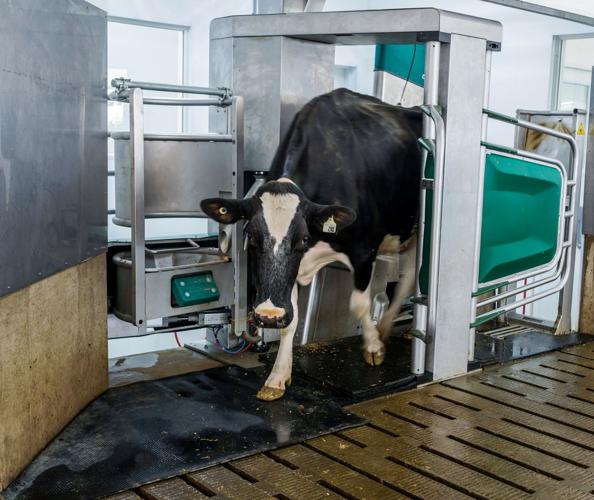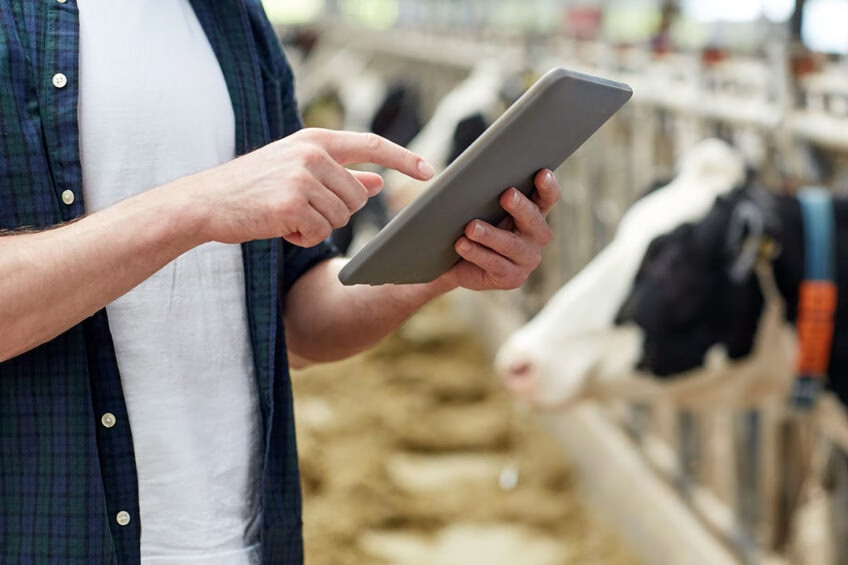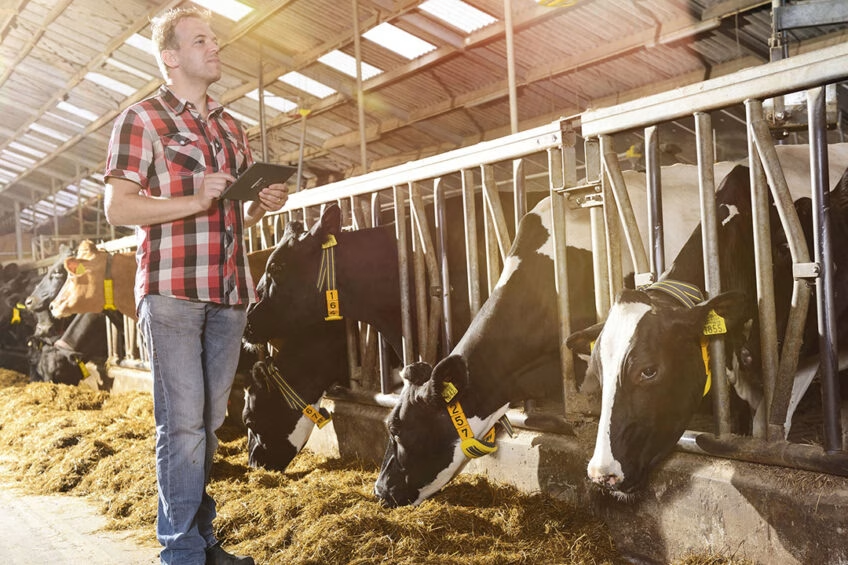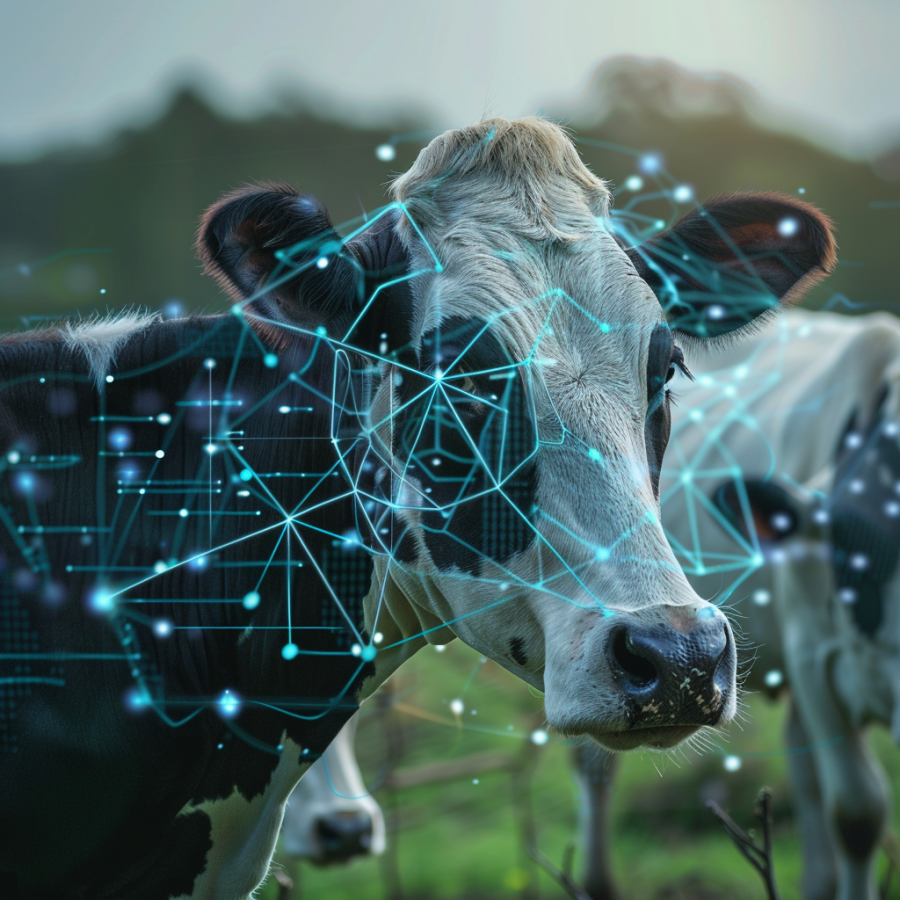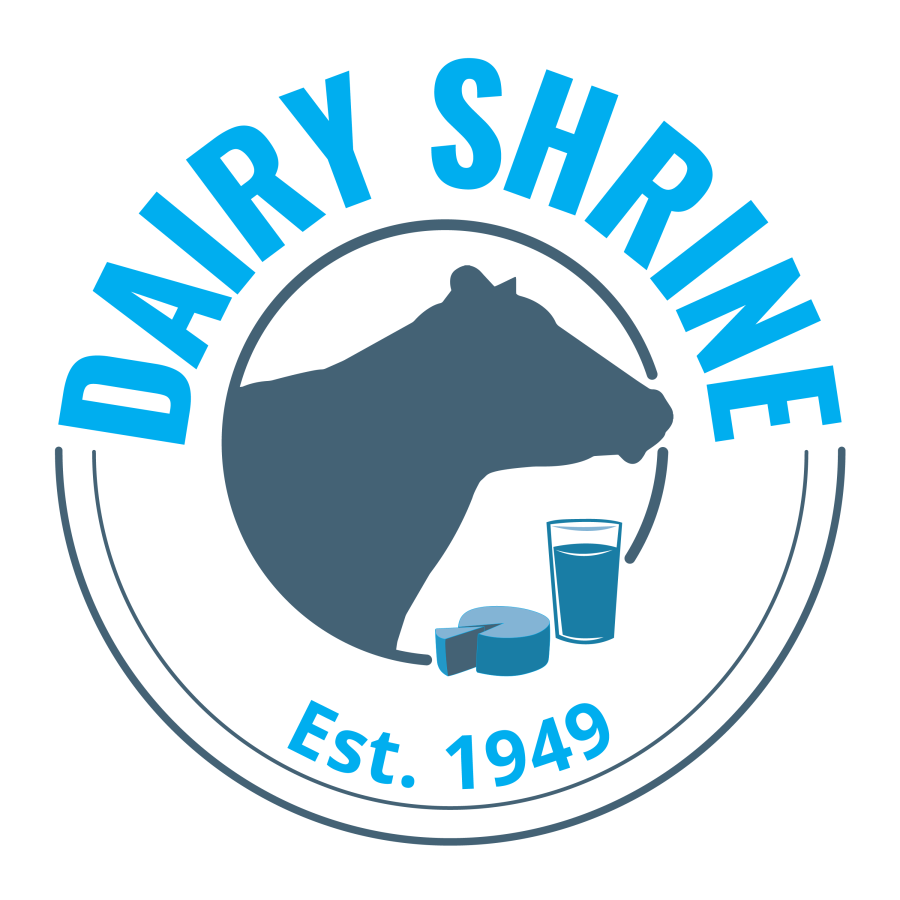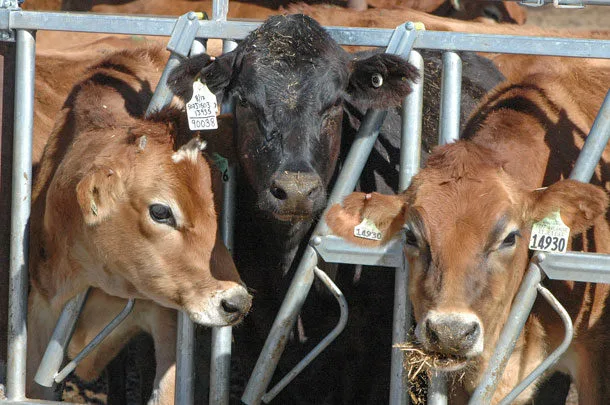Discover how digital tech is revolutionizing dairy farming. Ready to boost productivity and sustainability?
What if you could track your whole herd’s health and production from the palm of your hand? It may seem like science fiction, but it is becoming a reality for today’s dairy producers. The industry is undergoing a technological revolution as digital and precision technologies like machine learning and computer vision convert old procedures into highly efficient, data-driven operations. These technologies are not merely improvements but essential for the future of sustainable dairy production.
The Digital Dawn: Transforming Traditional Dairy Farming
Dairy farming has come a long way from its traditional beginnings. Initially, dairy producers depended on complex labor and primitive instruments to manage their herds. Cows roamed freely, while farmers spent lengthy hours milking by hand, resulting in variable production and significant labor commitment.
However, these old approaches had numerous disadvantages. Labor expenses have always been a considerable barrier. As farms became more popular, the need for additional labor rose, raising costs. Furthermore, monitoring each animal’s health took time and was frequently inaccurate. Farmers could only respond to observable sickness indicators, sometimes too late.
Environmental sustainability is another major issue. Traditional procedures did not take into account the environmental effects of dairy production. Methane emissions, poor waste management, and inefficient resource utilization contributed to considerable ecological damage.
Given these obstacles, it’s unsurprising that dairy producers are looking for better alternatives and introducing digital and precise technology. These developments aim to modernize dairy production, reduce labor inefficiencies, improve animal health monitoring, and promote sustainable practices. The potential of these innovations to change dairy production, making it more efficient and sustainable than ever, is a reason for hope and optimism in the future of dairy farming.
Have You Imagined Your Cows Could Talk?
Well, with modern dairy farming technology, we’re coming close! Machine learning, computer vision, comprehensive data analysis, and the Internet of Things (IoT) are transforming how dairy farmers manage their herds and farms.
Machine Learning: The Brain Behind the Operation
Machine learning is like having a super-smart assistant that never misses anything. This technology uses algorithms to evaluate data and forecast trends. For example, it may assist you in determining the optimal feeding schedules, detecting health concerns early, and even predicting milk yields. The more information it accumulates over time, the brighter it becomes. One real-world example is using accelerometer-based sensors on cows to track their movements and behaviors, which might signal health concerns such as lameness or estrus cycles (Halachmi et al., 2019).
Computer Vision: The Eyes on the Farm
Consider having a pair of eyes that can monitor your cows without tiring. Computer vision employs cameras and image recognition algorithms to monitor livestock. This may assist in identifying individual cows, monitoring their health, and even ensuring they have adequate feed. Technologies like YOLOv3 provide real-time monitoring of cow behaviors, making it more straightforward to manage them effectively (Bezen et al., 2020).
Big Data Analysis: Making Sense of It All
Extensive data analysis makes sense of the vast information sensors and cameras acquire. Consider it your farm’s data interpreter. This data provides insights into milk output, cow health, and operational efficiency. For example, farms that use this technology have reported considerable gains in milk output and fewer occurrences of mastitis by evaluating patterns in data obtained from multiple sensors (Boboc et al., 2020).
IoT (Internet of Things): Connecting It All
The Internet of Things links all of these technologies. It’s like having a seamless network where all gadgets communicate. Sensors on cows, cameras, and data processing systems deliver real-time information and insights. This interconnected system allows you to monitor your farm from any location using your smartphone or computer. Smart tags transfer data about each cow’s health and whereabouts to a central system, putting you in control and allowing immediate, educated decisions (Alonso et al., 2020).
These technologies assist dairy producers in better monitoring their animals and improving overall farm management—the result is happier cows and more productive farms.
Imagine Monitoring Every Move: Welcome to the Future of Livestock Farming!
Imagine a real-time future where you can track every movement, health state, and production statistic of your herd. Precision Livestock Farming (PLF) has made this a reality rather than a distant fantasy. PLF uses cutting-edge sensors and data analytics to change conventional livestock management.
PLF relies heavily on sensors. These gadgets, such as accelerometers and GPS trackers, continually gather information about animal life. Accelerometers monitor animal behavior and alert farmers to potential health risks. For example, a cow moving less than usual might be in pain or unwell, allowing for early intervention.
GPS tracking is another valuable tool. It allows for exact position monitoring of each animal, which is crucial for managing huge herds. This device guarantees no animal goes undetected, reducing loss and monitoring grazing habits.
Then, automated milking devices transform the way dairy cows are milked. These technologies improve milking efficiency while collecting data on milk output and content. Automatically produced reports give information on each cow’s productivity and health, allowing for improved feed and health management techniques.
The advantages of PLF go beyond essential convenience. Improved animal welfare is one key benefit. Constant monitoring enables prompt reactions to health conditions, decreasing animal suffering and enhancing quality of life. Additionally, the data-driven method allows you to optimize nutrition, resulting in higher milk production. Productivity is increased by adapting feeding and care programs to individual requirements.
Finally, PLF helps to reduce the environmental effects of cattle farming. Efficient resource usage results in less waste, and healthier animals often need fewer drugs, lowering the farm’s chemical impact. Overall, PLF improves farming by making it more inventive, sustainable, and compassionate.
Beyond Precision: The Digital Transformation of Livestock Farming
Digital animal farming is the next great agricultural leap, combining cutting-edge technology with conventional livestock techniques. Imagine having a farm in which real-time data insights drive all decisions. It sounds futuristic, but it’s becoming a reality due to AI, machine learning, and computer vision advances.
Unlike precision livestock farming, which focuses on gathering comprehensive data about animals and their surroundings using sensors, digital livestock farming goes beyond that. It links all acquired data in real-time, giving a comprehensive, integrated approach to farm management. This interconnection enables fast answers and modifications, improving every element of dairy production, from feed management to animal health.
So, how does this work? By combining AI and machine learning, digital cattle husbandry may detect health problems before they become serious. For example, computers evaluate data from numerous sensors to detect anomalous behavior or physiological changes in cows, alerting farmers to possible health issues. This proactive method provides prompt treatments, lowering the risk of disease transmission and enhancing overall herd health.
Feed optimization is another critical benefit. In digital farming systems, machine learning assesses feeding habits and nutritional requirements. These systems guarantee that each cow is fed the best diet for its health and production by constantly monitoring and modifying feed kinds and volumes. This increases milk output while reducing feed waste, resulting in more sustainable agricultural techniques.
Furthermore, computer vision technologies monitor the farm, constantly monitoring the cows’ movements and activities. This data, when analyzed by modern algorithms, aids in identifying heat cycles, monitoring calving, and even assessing overall animal well-being. Farmers may make fast modifications to improve farm management efficiency since this data is available in real time.
Digital livestock farming fosters a more inventive and responsive agricultural environment. Using real-time, networked data transforms how we manage and care for animals, increasing production, sustainability, and farm success.
Reaping Economic Rewards: The Financial Case for Digital Dairy Farming
The economic benefit is one of the most compelling reasons dairy farmers use digital and precision technology. Consider turning your dairy operations into a well-oiled machine in which every choice is data-driven. The technology investments may initially seem excessive, but the rewards may be enormous.
- Cost Savings and Efficiency Gains
Implementing precise technology may drastically reduce expenses. Automated technologies for monitoring cow health and production may help eliminate the need for human labor. According to USDA research, automated milking systems may save a farm between $20,000 and $30,000 per year in labor expenditures [USDA Publications]. These systems also assist in guaranteeing that cows are milked at the ideal times, resulting in higher milk output and quality. - Return on Investment (ROI)
Dairy producers experienced quick returns on their early investments. A thorough examination of farms that have adopted precision dairy technology discovered ROI periods ranging from two to five years, depending on the size and complexity of the equipment deployed [Journal of Dairy Science]. The survey also found that farmers received an average yearly return of 15-20% on digital investments. - Financial Benefits: Data-Driven Decisions
Farmers may use big data analytics to make better choices regarding feed efficiency, health management, and breeding initiatives. For example, early illness identification may save thousands of dollars in veterinarian bills while preventing production losses. Accurate feed monitoring and optimization may save expenditures 10-20% annually [Computers and Electronics in Agriculture]. - Boost in Productivity
Because of precise technology, dairy farming has become a low-cost, high-productivity sector. Sensors and IoT devices assist in monitoring each cow’s nutritional intake and health in real-time, resulting in improved herd health and increased milk output. A targeted investigation indicated that farms adopting precision technology witnessed an average increase in milk production of 5% to 10% [Animals Journal].
So, although the initial investment in adopting this modern technology may seem hefty, the long-term advantages of cost reductions, productivity improvements, and high ROI make it a wise financial decision for any forward-thinking dairy farmer. Why wait to future-proof your dairy business?
Adopting Innovations: Tackling Challenges Head-On
Adopting cutting-edge technology in dairy production has its challenges. Let’s look at some possible issues and how to deal with them efficiently.
Initial Costs: The Price of Progress
The initial cost of implementing sophisticated technology might be high. The expenses of acquiring sensors and IoT devices and investing in robust data processing tools may soon pile up.
How to Overcome: Look into government incentives and grants to upgrade farms. Many governments provide financial help to farmers willing to embrace new technology. Consider leasing equipment or researching finance alternatives explicitly designed for agritech projects.
Technical Expertise: The Knowledge Gap
Another hurdle is the technical knowledge needed to administer and maintain these systems. Only some farmers have a background in IT or engineering, so the learning curve is severe.
How to Overcome: Utilize training resources and instructional initiatives. Many colleges and agricultural institutes provide courses and seminars on precision farming technology. Collaboration with technology suppliers may also be beneficial; they often provide training and assistance as part of their service. Don’t be afraid to ask for help or pay professionals if required.
Data Management: The Information Overload
Advanced technologies result in a deluge of data. Managing, understanding, and using this data correctly is critical yet tricky.
How to Overcome: Invest in user-friendly software solutions that simplify data administration. Platforms with simple interfaces and reliable support may make a significant impact. Consider employing a data analyst or outsourcing this task to experts who can transform raw data into valuable insights. Cloud-based solutions may assist in simplifying storage and access, ensuring that your data is always safe and available.
Collaborative Efforts: Strength in Unity
Finally, realize that you are not alone on this path. Collaboration may be an effective method for overcoming the challenges of implementing new technology.
How to Overcome: Join agricultural groups and cooperatives concentrating on technical developments. These associations often exchange resources and experience and pool financial resources to assist members in upgrading their operations. Networking with other dairy farmers who have transitioned might give valuable insights and guidance.
Embracing this technology may initially seem frightening, but with the appropriate tactics and assistance, you can create a more productive and sustainable dairy farming enterprise. Stay proactive, seek out educational materials, and never be afraid to cooperate for a smoother transition into the future of agriculture.
The Future is Now: AI, Robotics, and Blockchain Driving Dairy Farming Forward
The rate of technical innovation in the dairy farming industry shows no indications of stopping. AI, robots, and blockchain technology are transforming the future of digital and precision dairy farming.
One of the most exciting developments is using Artificial Intelligence (AI) to anticipate health problems before they become serious. AI systems can evaluate sensor data to predict illnesses, track reproductive cycles, and recommend the optimal times to feed and milk. This proactive strategy leads to healthier cows and greater yields.
Robotics is another rapidly developing subject. Automated milking technologies alter conventional procedures, but the future looks much brighter. Consider robots that can nurse, feed, clean, and monitor themselves. This technology could cut labor costs and dramatically improve dairy operations.
Blockchain technology has the potential to change traceability and transparency in dairy production. It assures that every stage of the production process, from farm to table, is documented and unchangeable. This facilitates the traceability of dairy products, which is increasingly essential for customer confidence and regulatory compliance.
Continuous research and development are also necessary. For example, adding smart glasses for augmented reality (Caria et al., 2019) might give farmers real-time data overlays, thus improving field decision-making. Collaboration between industry and academia generates previously thought-impossible inventions.
Staying educated and flexible to new technology is more critical than ever for dairy producers. Attend industry conferences, subscribe to relevant publications, and consider working with tech experts to incorporate the most recent innovations on your farm. The future is digital, and those who embrace these technologies will pave the road for sustainable and efficient dairy production.
The Bottom Line
Digital and precision technology have transformed conventional dairy farming and how we manage and monitor our herds, allowing us to make sense of massive volumes of data. Machine learning and computer vision technologies provide unparalleled insights into animal health and behavior. At the same time, the Internet of Things seamlessly integrates all aspects of the farm. Incorporating these technologies increases production while ensuring animal welfare and sustainability.
With the emergence of artificial intelligence, robots, and blockchain, the future of dairy farming seems brighter and more efficient than ever. Despite the challenges—initial expenses, technical competence, and data management—farmers and engineers are working together to pave the road ahead.
Imagine a future in which every motion of your cattle is tracked in real-time, resulting in better choices and healthier animals. Are you prepared to accept these advancements and improve your dairy farm? Exploring and implementing these technologies is not an option but a must for remaining competitive and sustainable in the quickly changing agricultural world.
Key Takeaways
- Advanced technologies like machine learning, computer vision, and IoT are transforming dairy farming.
- Health monitoring and real-time tracking improve herd management and productivity.
- Data-driven decision-making ensures precise feed and care management.
- Digital tools redefine sustainability practices in dairy farming.
- Innovations offer smoother, more profitable, and environmentally sustainable operations.
Summary:
Have you ever thought about how much easier and more efficient your dairy farming operation could be with the help of advanced technologies? Well, the future is now! Tools like machine learning, computer vision, and the Internet of Things (IoT) are revolutionizing the dairy industry, offering promising advancements for health monitoring, productivity enhancement, and sustainable practices. Imagine your herd’s health being tracked in real time or being able to make data-driven decisions about feed and care with unprecedented precision. Technologies like these don’t just promise better yields; they redefine what it means to manage a dairy farm sustainably and efficiently. Digital tools are setting new standards for productivity and sustainability in dairy farming, allowing you to track cow behavior and health with real-time monitoring, make data-driven decisions for feed management, and improve overall herd productivity and welfare. Embracing these innovations could transform your dairy farming practices, making operations smoother, more profitable, and environmentally sustainable.







